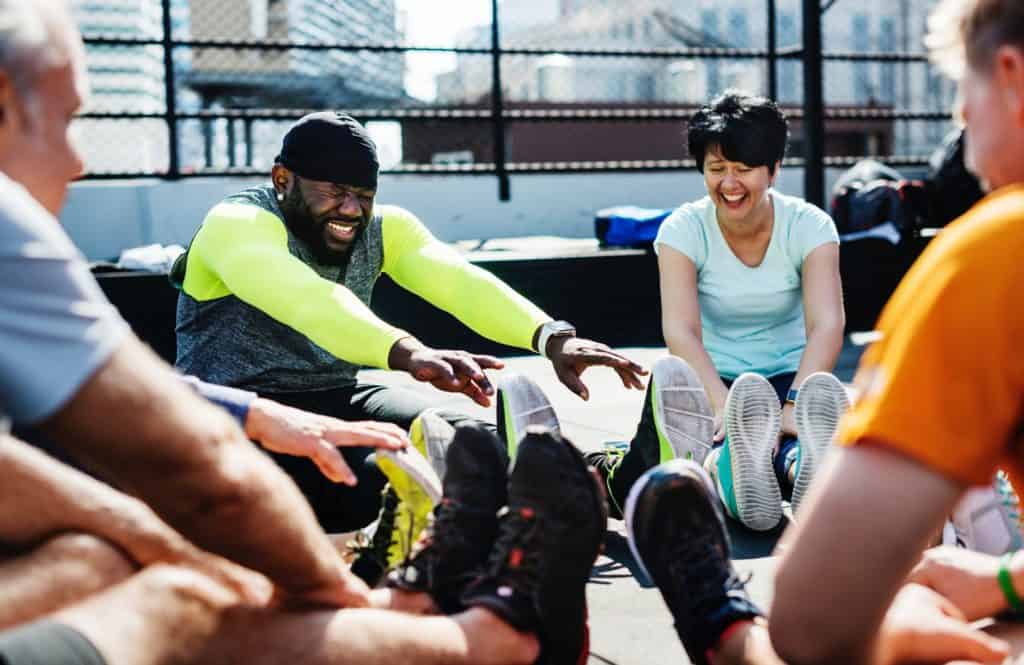7 Essential Hip Movements to Maximize Efficiency for Runners
Tight Hip Flexors and Injury
Hip flexor injuries are a common injury among runners, but they can be prevented with the right exercises. A strong, flexible hip is crucial to running efficiently and preventing injury. But what are the best hip-strengthening movements? What should you do before and after your run? And how often should these exercises be performed? In this guide, we’ll answer those questions and more about improving your hip mobility and strength so you can conquer those runs like a champ.
Why is it important to strengthen your hip flexors?
When it comes to running and overall health, strengthening your hip flexors is essential for preventing injury and keeping yourself on the road. Unfortunately, many runners are unaware of the importance of this muscle group. As a runner myself, I can tell you that my hips were weak when I first started running. This led to a lot of pain in my lower back and even some mild sciatica issues as well.
Hip Anatomy
The hip is the second most complex joint in our body (the shoulder being the first) and has a lot of moving parts so it can move in so many directions. When we run, our hamstrings contract to pull our knee forward of the foot during each stride. Then there are the hip flexors, which include psoas major (the main muscle) along with iliacus and rectus femoris (two other muscles). These four muscles wrap around the various bones in our hips and help us stand up straight. They also support our movement during exercise—like walking or running.
The problem is that these muscles often become tight from sitting all day at work or standing too much throughout day-to-day life. They tighten up due to lack of use or overuse through repetitive motion like walking or standing for long periods at work all day long if we do not stretch them adequately! This can lead to low back pain if the tension becomes too much.
With proper stretching exercises combined with strengthening exercises such as squats or lunges done correctly, you can fix those tight hip flexors.
Try these simple hip-stretching and strengthening exercises to keep your hips healthy and keep you running.
The following exercises can help to increase muscular flexibility in your hips, which in turn can help prevent injury. They can also help increase your range of motion and improve your balance and running form. While these movements are great for anyone who’s active, they’re especially useful for runners.
Here are six simple tips that will keep those hips healthy:
Need some help?
Shape Success, Live Exceptionally
Hit that button, and get started today.
Warm up.
While you may think that warming up is just a way to get your muscles ready for action, it actually has some important benefits. Warming up will help your body prepare for exercise and reduce the risk of injury. By doing so, you are helping your body loosen up and set up for success.
Warming up should last at least 10 minutes, perhaps longer depending on temperature of the running environment, and include dynamic stretching exercises such as walking lunges, arm circles or leg swings.
Do a hip flexor stretch.
Post run or just while sitting around, stretch out those tight hip flexors a bit.
To stretch your hip flexors, lie on your back with one lifted in the air and the other straight out on the floor. Interlace your hands under your raised leg and pull your knee towards your chest. Pull until you feel a gentle pull in that inner thigh area. Hold for 20 to 30 seconds on each side.
This is a great stretch to do regardless of time and you can do it almost anywhere (I wouldn’t do it on the bathroom floor or while out at a restaurant, but almost anywhere else works).
Pigeon pose and runner’s lunge
Pigeon pose and runner’s lunge are two great hip flexor exercises you should be doing regularly.
For the pigeon pose, sit on your hands and knees and stretch one leg out behind you, so that it’s parallel with the floor. Then bring your left knee down toward the floor in front of you until it forms a 90-degree angle (as if sitting in a chair). Keep your hips as square as possible for best results! You can also try this variation: place a small pillow or cushion under each knee for added comfort.
For the runner’s lunge, simply step back into a reverse lunge with one foot while keeping both knees bent at 90 degrees similar to a pigeon pose, without dropping all the way to the ground. Repeat on the other side by stepping out into a forward lunge with one leg while keeping both knees bent at 90 degrees on that side as well!
This exercise is great because it stretches and strengthens multiple muscle groups in both legs at once.
Do a glute bridge.
To do a glute bridge, lie on your back on the floor with your knees bent and your feet flat. Tighten your abs and lift your hips off the floor until you create a straight line from shoulders to toe. Try to keep both shoulders on the ground for maximum stability and control of this exercise.
As simple as this exercise might seem, it’s an effective way to strengthen the muscles that support your spine, improve posture and help prevent back pain associated with running (and other activities).
Hold the position for 20-30 seconds and repeat a few times.
A few ways to increase difficulty:
- Place a dumbbell under each foot while performing the movement to add some extra height;
- Place feet close together so they are in line with knees;
- Place feet wider than hip width apart so they are at right angles with knees;
- Place one leg on top of another or stretch one leg straight out making sure not to twist during movement;
- Or tilt your pelvis forward during movement.
Do a single-leg squat.
Single leg squats are a great way to isolate and strengthen each leg. Strong muscles and loosening tight hip flexors decrease risk of injury.
Stand on one leg, with your other leg straight out in front of you and your arms straight up above your head. Bend at the hip until your thigh is parallel to the ground. Then, lift back up, driving through both heels as you come up to standing position again (it’s important to keep both legs stationary during this movement).
Repeat for 10–12 reps before switching sides with each set or round of squats.
Do a clam shell.
The clam shell is a great exercise for strengthening the glutes, hamstrings and hip flexors. These muscles are often tight in both runners and non-runners alike, but this exercise will help you avoid injury or pain by keeping them loose and flexible even if they look a bit weird.
To do the clam shell, lie on your side with knees bent. Slowly raise one leg up to the side, lifting at the knee, tightening the glutes, and keeping your feet together.
At first glance, it may appear that there aren’t many movements here—and indeed, most people don’t realize how challenging this exercise can be until they try it! It’s important to keep breathing throughout this entire process; if necessary take breaks between repetitions if needed but aim for doing 5-10 reps per side at least once per week if possible.
Banded hip extensions
Banded hip extensions are a great way to start strengthening your hip muscles, especially if you’re new to working out or have had some injuries in the past. They can also be used as part of a warm-up routine before any other exercises that target the same muscles.
To do banded hip extensions, anchor one end of your resistance band onto something and secure like a squat rack or weight machine, about 2 feet off the ground. Face away from this anchor point, stand inside the band, and place it around your waist. Drop down to your knees and move forward until the band it tight.
Then, sit back on your heels into the starting position. ‘Sit up’, pushing your hips forward until you feel resistance from the band. Once you’ve reached this position, squeeze at both glutes, hold for 3-5 seconds, and relaxing back down into starting position for two seconds before going up again for another rep!
Conclusion
If you want to be a good runner, then it’s important to take care of your hips. That includes working on those tight hip flexors. These exercises will help strengthen your hip flexors, prevent injury, and improve performance.
Let Us help You Out
At CONDITIONerd we are here to help you achieve better physical and mental health through exercise. Check out the plans we offer to our customers and see if you could benefit from working with our team. And if you have questions, you can always contact a CONDITIONerd team member.
Personal trainers, like those found here, can help guide you on your pathway towards reaching your fitness goals, whether that is getting bigger, stronger, faster, more lean, or just generally feeling better.
We can get you setup with a periodized workout plan, supplement information, and advice on nutrition to help you reach your goals.
The only thing you need is some motivation and a willingness to change some old habits.
Get into contact with us to find out what membership is right for you. In a CONDITIONerd program, you’ll be surrounded by others who can help you to get where you want to be.
Generally, our clients start to see some pretty awesome changes in 2-3 months time, some sooner.

